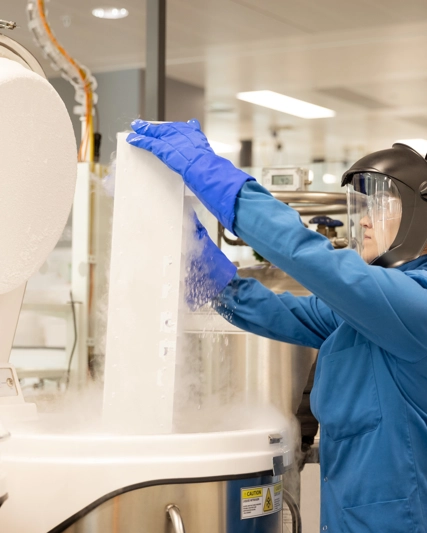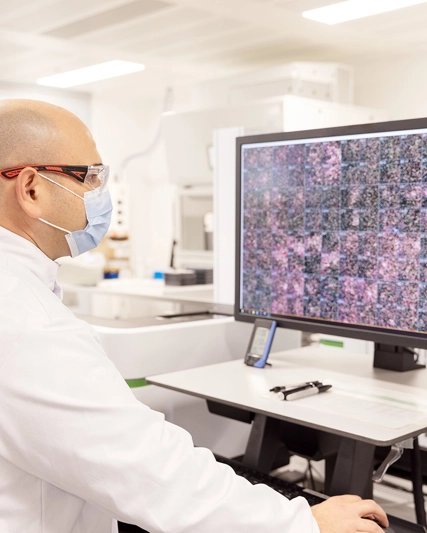If you are 50 years of age or older, the virus that causes shingles is likely already inside of you. In fact, nearly all – 99% – of adults carry the virus that causes shingles, yet research has showed that only 7% of adults over 50 believed they were at an increased risk of developing the disease.[i],[ii],[iii] But did you know there are steps you can take right now to prevent yourself from getting it?
When it comes to staying ahead of potential health challenges, the most important thing a person can do is educate themself. Dr. Daniel Verdi, Senior Medical Director at GSK, is using his 17 years of experience in medical affairs to share information about the disruption that shingles can cause in a person’s life and how people can protect themselves from getting the disease.
What is Shingles?
Shingles, also known as herpes zoster, typically presents as a painful rash that develops on one side of the face or body. Shingles is caused by the reactivation of the varicella zoster virus (VZV), the same virus that causes chickenpox.[iv] After chickenpox, the VZV remains dormant in a person’s system and can reactivate years later. This reactivation causes shingles.[ii]
Unfortunately, experiencing shingles can be an isolating and painful experience. More than 96% of people who get the disease experience acute pain, often described as aching or burning.[v] The symptoms can cause significant disruptions in a person’s day-to-day activities for up to several weeks.
People may also have long-term effects from shingles. Once the rash is gone, some people experience what is known as post-herpetic neuralgia (PHN)-- a painful complication that can last for several months, and in rare cases up to several years. PHN is one of the most common complications of shingles,[vi] and occurs in anywhere from 5% to 30% of people who have had the disease.[vii]
Common Misconceptions
According to Dr. Verdi, the biggest misconception he hears is from people who are living a healthy lifestyle who believe they are not at risk. “What is important to consider is, if you’ve had the chickenpox, you are at risk for shingles,” explains Dr. Verdi.
As people age, natural immunity tends to wane and hinders the body’s ability to prevent the virus from reactivating and causing shingles. [viii] This waning tends to happen around 50 years old but can occur earlier.[ix]
“Even if you’re a healthy, active person, you can still be at risk for shingles. Approximately one in three people in the US will develop shingles in their lifetime.[viii] It’s important that you consider your risk of getting shingles seriously and take action, so it doesn’t impact your life,” says Dr. Verdi.
Since shingles is caused by a virus that can lay dormant in a person’s system,[ii] there is also a possibility of recurrence. “Due to the nature of the virus, it’s difficult to pinpoint whether or not someone could continue experiencing recurrences. If you’ve had it once and haven’t taken action to protect yourself, you still have a risk of developing shingles again.”
“Since the shingles virus is inside of you,[ii] social contact is not a precursor for getting the disease. The risk is always there if you’ve had chicken pox,” said Dr Verdi. It is worth noting that if you never had chickenpox or received the chickenpox vaccine and you come into contact with the fluid from the blisters of the shingles rash, you can develop chickenpox. This could put you at risk of developing shingles later in life.
A Way to Help Protect Against Shingles
“There are preventable steps that adults can take to protect themselves against the disease,” said Dr. Verdi. “I encourage all adults 50 years and older to speak with their doctor or pharmacist to learn more about how they can reduce their risk of shingles through vaccination.” Learn more about shingles here.
References
[i] Ipsos MORI, https://www.ipsos.com/ipsos-mori/en-uk/adult-perceptions-of-shingles-risk A5a. To what
extent do you personally feel at risk – if at all – of getting shingles (again) in the following time
periods? Question asked on a 7 point scale. Base: Total (n=2509), Belgium (n=300), Netherlands
(n=150), Sweden (n=150), Australia (n=300), UK *n=300), Hong Kong (n=108), Austria (n=300),
Denmark (n=300), Finland (n=301), Germany (n=300) Last accessed: February 9, 2022
[ii] Bricout H, et al. Herpes zoster-associated mortality in Europe: a systematic review. BMC
Public Health. 2015;15:466.
[iii] Bollaerts K;Epidemiology and infection;2017;145;2666-2677 REF-57577
[iv] Johnson RW et al. Herpes zoster epidemiology, management, and disease and economic burden in
Europe: a multidisciplinary perspective. Therapeutic Advances in Vaccines. 2015;3(4):109-120.
[v] Bowsher D. Acute Herpes Zoster and Postherpetic Neuralgia: effects of acyclovir and outcome of
treatment with amitriptyline. British Journal of General Practice; 1992; 42; 244-246
[vi] Dworkin RH, et al. Diagnosis and assessment of pain associated with herpes zoster and postherpetic
neuralgia. J Pain 2008;9:S37–44.
[vii] Kawai K., Gebremeskel B., Acosta C. (2014) Systematic review of incidence and complications of
herpes zoster: towards a global perspective. BMJ Open 4: e004833
[viii] Chen SY, et al. Incidence of herpes zoster in patients with altered immune function. Infection
2014;42:325–34.
[ix] Harpaz. Prevention of herpes Zoster. June 2008. Available at: https://www.cdc.gov/mmwr/preview/mmwrhtml/rr5705a1.htm Last accessed: February 9, 2022 REF-2665



